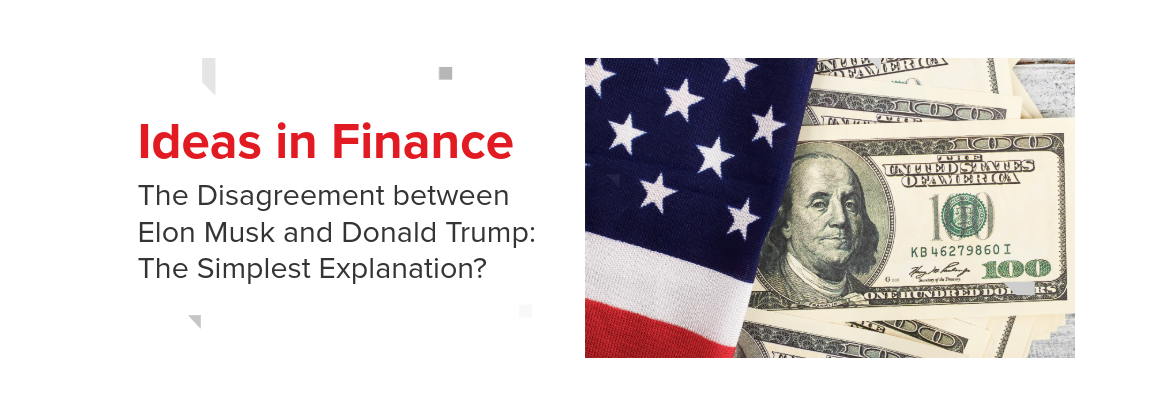The Disagreement between Elon Musk and Donald Trump: The Simplest Explanation?
The falling out between Donald Trump and Elon Musk is one of the more prominent news stories of 2025. We will probably never know the whole story. But at least one part of the argument was over the matter of the US national debt and what to do about it. Elon Musk took exception with Donald Trump’s spending bill (which Donald Trump called the Big, Beautiful Bill). Musk believes the legislation, which has since been passed by both houses of congress, to be irresponsible and profligate. But Donald Trump says he wants to reduce the government’s debt, so why doesn’t he agree with Elon Musk? Why does Donald Trump support the bill? In the simplest possible terms, the argument between the two men is about how to solve the debt problem, not whether there is a debt problem. Musk favours a savings-based solution. Trump favours a growth-based solution. Let’s see how such a seemingly trivial thing can lead to a heated argument.
First, some facts. The US federal debt is around $36 trillion and going up. The interest due each year is now around $1 trillion. The deficit, which is the difference between income (from taxes) and expenditure, is around $2 trillion per year. In the most recent fiscal year, the US government collected about $4.5 trillion and spent about $6.5 trillion, borrowing the difference. Obviously, this cannot go on. Both Musk and Trump say they want to do something about it. Why aren’t they the best of friends?
The numbers are stunningly large, so let’s scale them down to a regular Australian household’s level and see how they look. Let’s say that the household has $100,000 per year to spend. The household owes $800,000 and pays $22,000 per year in interest. This seems manageable. The problem is that the household is spending more than $100,000 per year. It is spending $144,000 per year, borrowing an additional $44,000 every year, which is then added to the $800,000 debt. As time goes by, the household will steadily sink further into a financial abyss. If you were in this situation, you’d be having sleepless nights.
What is the way out? There are two ways. Mr. Trump’s way. And Mr. Musk’s way. Mr. Trump says that the best way out is to grow the household’s income above $144,000. This involves borrowing and spending more now to stimulate the household’s earning capacity. Mr. Musk says that the best way out is to cut spending immediately below $100,000. This would free up funds that could be used to pay down the debt but would significantly crimp the household’s lifestyle. It might send the household into a recession. There is logic to each path, but they are at odds with each other. You could imagine the household’s decision-makers arguing over which path to take. Like the disagreement between Musk and Trump, it could get rather heated.
To finish off, let’s put it another way, just to see the point very clearly. If you owe $10,000 and earn $60,000, you could try to save more or you could try to earn more. If you save more, you can reduce the $10,000 to, say, $8000. Relative to your income of $60,000, that would reduce your debt-to-income ratio from 16.5% to 13.3%. If you try to earn more, you might be able to increase your income to $75,000. If you can, your debt-to-income ratio reduces from 16.5% to 13.3%. As you can see, the result is the same, but the approaches are very different. It is too simplistic to say that a disagreement over which path to take to solve a problem they both agree is important is the root cause of the argument between Donald Trump and Elon Musk, but it is at least a part of the story.
Read more Ideas in Finance
Young Investors Seeking Dividends
The Velocity of Money and Central Bank Digital Currencies
Should You Want Interest Rates to Fall?
What’s Going on with the Chinese Economy?
Is it Negative Gearing or Monetised Housing?
Set the Interest Rate at Zero. Why Not?
The Commodity Research Bureau (CRB) Index and Australian Inflation

